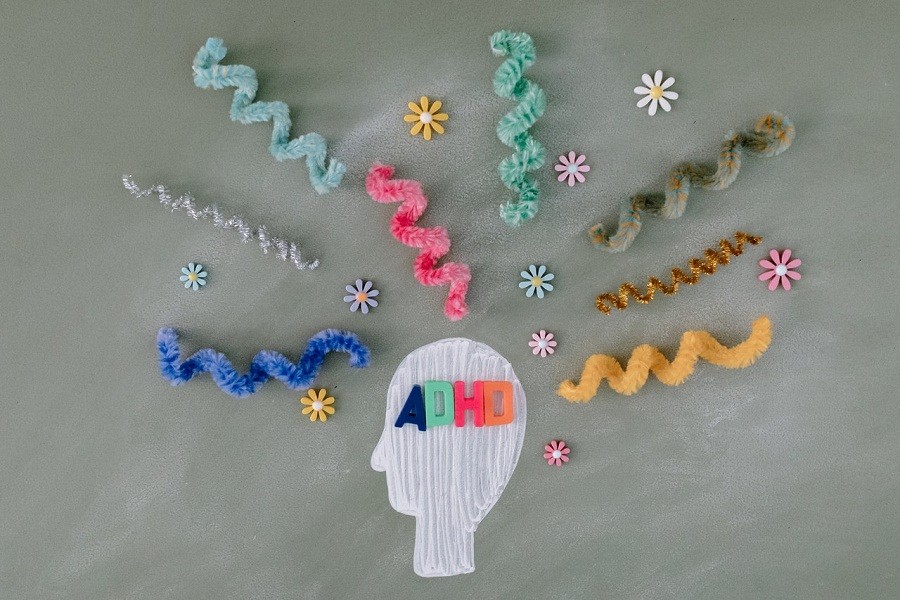Remember Hiccup who feels different from other Vikings (a Canadian historical television drama series) in his village?
“He doesn't listen," says the protagonist's father in How to Train Your Dragon (American animated cinema). "His attention span is that of a sparrow... I take him fishing, and he goes troll hunting!"
The more he tries to fit in with his ‘neurotypical’ tribe, the more alienated he becomes. Only by accepting his individuality and pursuing his own path, does this young warrior realise his potential and save his village.
From Pixar’s Dory in ‘Finding Nemo’ to Percy from ‘Percy Jackson and the Olympians and beyond,’ one doesn’t need an overt ADHD diagnosis. A sprinkle of one colourful monologue or manic action sequence is enough to jump to the conclusion that a kindred spirit is found.
Misconceptions
Even though there are a lot of ADHD diagnosed role models both in reel and in real life, a lot of people still think it’s not real.
Some teachers still think it’s caused by bad parenting, some doctors still think it is only for children, some parents still think they are to blame for their kid’s ADHD.
Most importantly, some adults with undiagnosed ADHD are suffering every day and some kids with ADHD still think they are worthless.
For these reasons and thousands more, the importance of talking about ADHD and combating misconceptions is more than ever, especially in ADHD Awareness Month, October.
Understanding ADHD
ADHD stands for Attention Deficit Hyperactivity Disorder, a complicated brain disorder or a developmental impairment of the brain’s executive functions. People with ADHD struggle with impulse control, concentration, and organisation.
Neuroscience, clinical research and brain imaging-- all paint the same picture: ADHD is not a behavioural disorder or a mental illness. It is not a distinct type of learning disability. Rather, it is a developmental disorder of the brain's self-management system and can be diagnosed in both adults and children.
Some of the common ADHD symptoms include lack of concentration, inattention, exaggerated emotion, hyper-focus, hyperactivity, weak impulse control, poor time management and executive dysfunction, etc.
Awareness needed from the school level
Pritom Das, a psychologist from Mind Tale-- a mental health service, emphasises making an inclusive school system. He suggests implementing systematic approaches like cultivating the culture of having a school psychologist who can diagnose the difficulties as well as provide mental health updates or guidelines for children.
Because ADHD can show up in the classroom by impairing a child’s ability to concentrate, which makes it difficult for them to learn.
Not paying attention makes it difficult to remember what the teacher says about lessons, assignments and due dates. As a result, the child’s capability to study the material and complete homework may be hindered.
“I think, the smaller the classroom is, the more effective the teaching would be as in general, a class constitute student with different level of understanding. There are a lot of ADHD symptoms that need close monitoring.”
“So, a smaller classroom paves the way for an approachable environment which will allow the teacher to keep an eye on each and every student in the class and can draw the attention of the students easily,” explained Dr Pritom.
According to him, banning corporal punishment in all schools was a good step that can be very effective in bridging the student-teacher communication gap. Thus, it would be easier for an ADHD diagnosed child to gather the courage for asking help from the teacher.
Befriending them
Being an assistant professor of the Bangladesh University of Professionals, Meherun Nesa’s life is intertwined with students. She thinks that the role of a teacher doesn’t solely revolve around teaching; they have to wear the mantle of a facilitator too.
“I believe, coupled with the warmth of friendship and responsibilities of a guardian, teachers can be an excellent guidance system for students.”
Just as she believes in a positive student-teacher relationship, she also tries to keep a time slot for her students so that they can reach her if they fail to understand the topic properly during classes.
In a nutshell, fostering positive bonds with students by creating a constructive classroom climate can be a helpful tool for the betterment of ADHD diagnosed.
Therapy before medication
In most circumstances, a combination of behaviour therapy and medication is the most effective treatment for ADHD. Behaviour therapy, particularly parent training, is advised as the first line of treatment for preschool-aged children (ages 4-5) with ADHD before medication is considered.
Dr Pritom, however, brings an important point mentioning how the eradication of mental health stigma is important to fight the misconceptions about ADHD.
“The misguided notion of curing patients only by prescribing medicines still looms large in society. Undoing the knot of any mental health problems by taking therapies is still frowned upon.”
So, Dory’s advice to “Just Keep Swimming” can be the anthem for eradicating the disorder and providing assistance to people with ADHD so that they can thrive.


